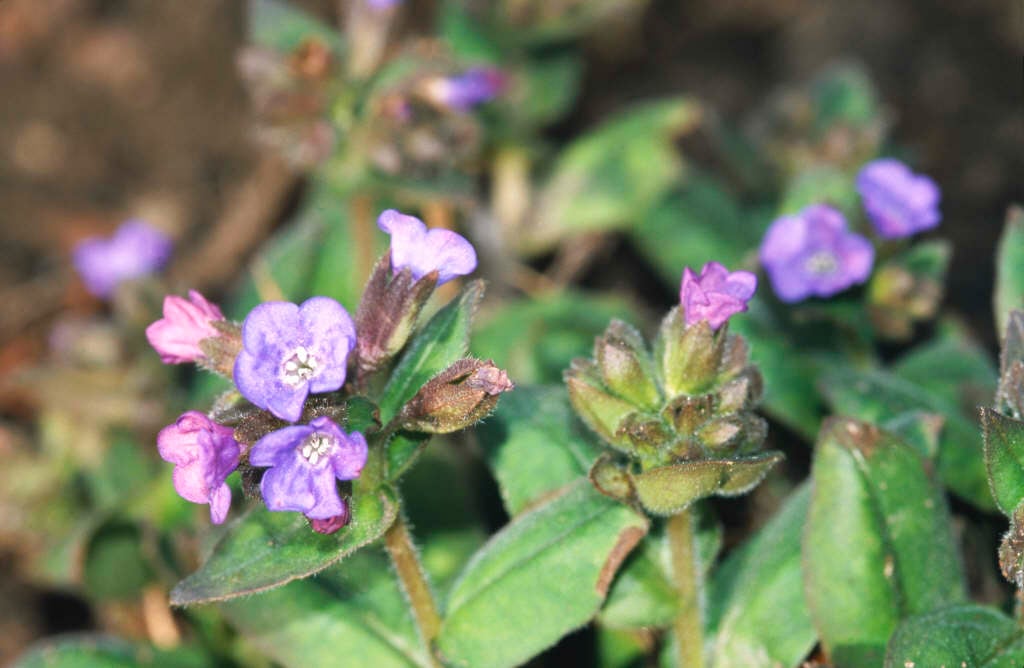Pulmonaria angustifolia
narrow-leaved lungwort
A clump-forming herbaceous perennial to 30cm, with roughly hairy, ovate dark green basal leaves and leafy stems bearing a terminal cluster of bright deep blue, funnel-shaped flowers

Buy this plant
Size
Ultimate height
0.1–0.5 metresTime to ultimate height
2–5 yearsUltimate spread
0.1–0.5 metresGrowing conditions
Moisture
Moist but well–drained, Poorly–drainedpH
Acid, Alkaline, NeutralColour & scent
| Stem | Flower | Foliage | Fruit | |
| Spring | Blue | Green | ||
|---|---|---|---|---|
| Summer | Green | |||
| Autumn | ||||
| Winter |
Position
- Full shade
- Partial shade
Aspect
North–facing or East–facing
Exposure
Exposed or Sheltered Hardiness
H6Botanical details
- Family
- Boraginaceae
- Native to GB / Ireland
- No
- Foliage
- Deciduous
- Habit
- Clump forming
- Genus
Pulmonaria can be herbaceous or semi-evergreen rhizomatous perennials with terminal clusters of funnel-shaped flowers in late winter or early spring, and often strikingly patterned leaves developing in summer
- Name status
Correct
- Plant range
- Europe
How to grow
Cultivation
Grow in humus-rich, fertile, moist but not waterlogged soil. Makes good groundcover and is attractive to bees. Remove old leaves after flowering
Propagation
Propagate by seed or by division
Suggested planting locations and garden types
- Cottage and informal garden
- Wildlife gardens
- Low Maintenance
- Banks and slopes
- Flower borders and beds
- Ground cover
- Underplanting of roses and shrubs
Pruning
No pruning required
Pests
Diseases
May be subject to powdery mildews in dry weather
Love gardening
Sign up to receive regular gardening tips, inspiration, offers and more
View our Privacy Policy
Get involved
The Royal Horticultural Society is the UK’s leading gardening charity. We aim to enrich everyone’s life through plants, and make the UK a greener and more beautiful place.